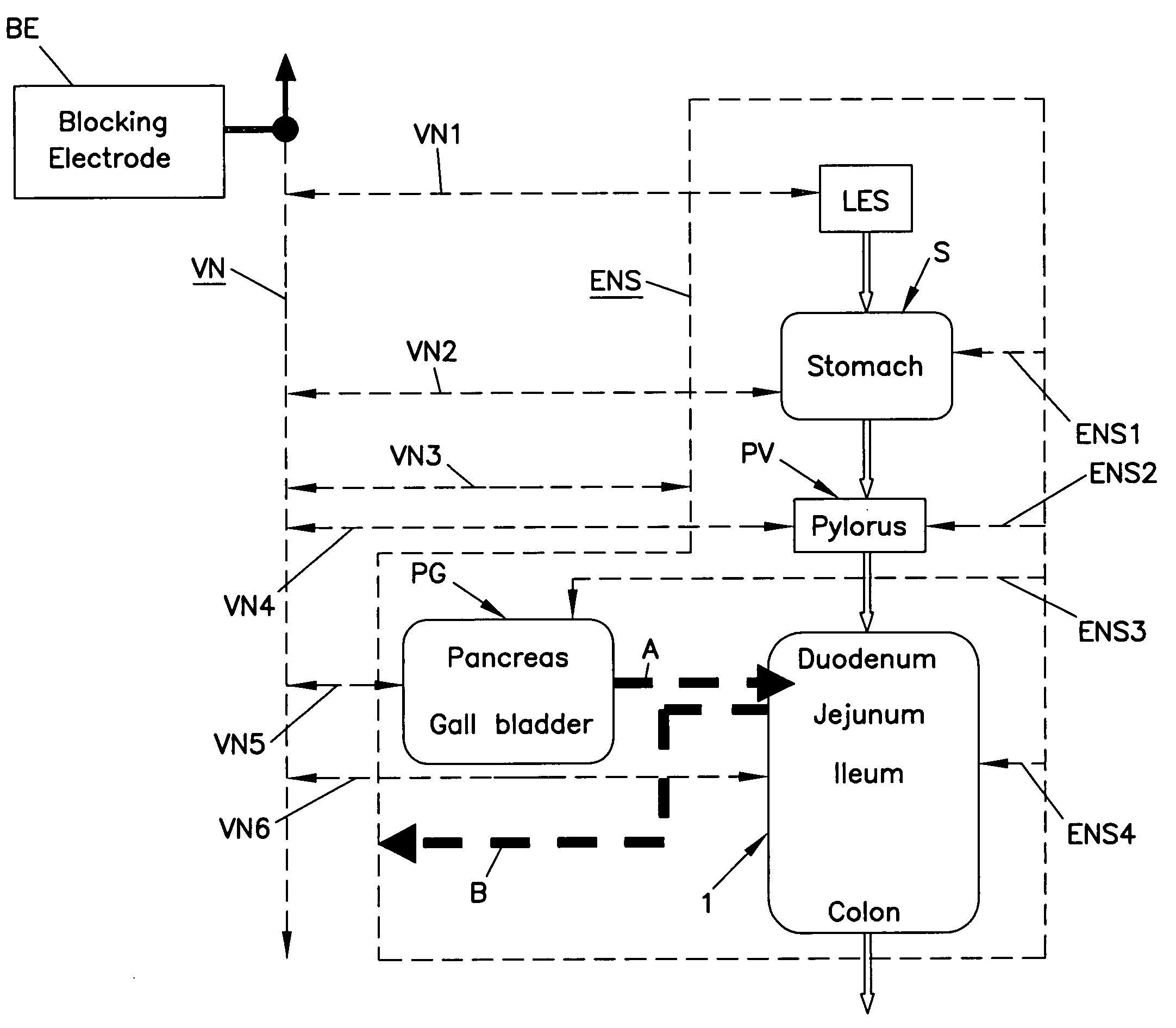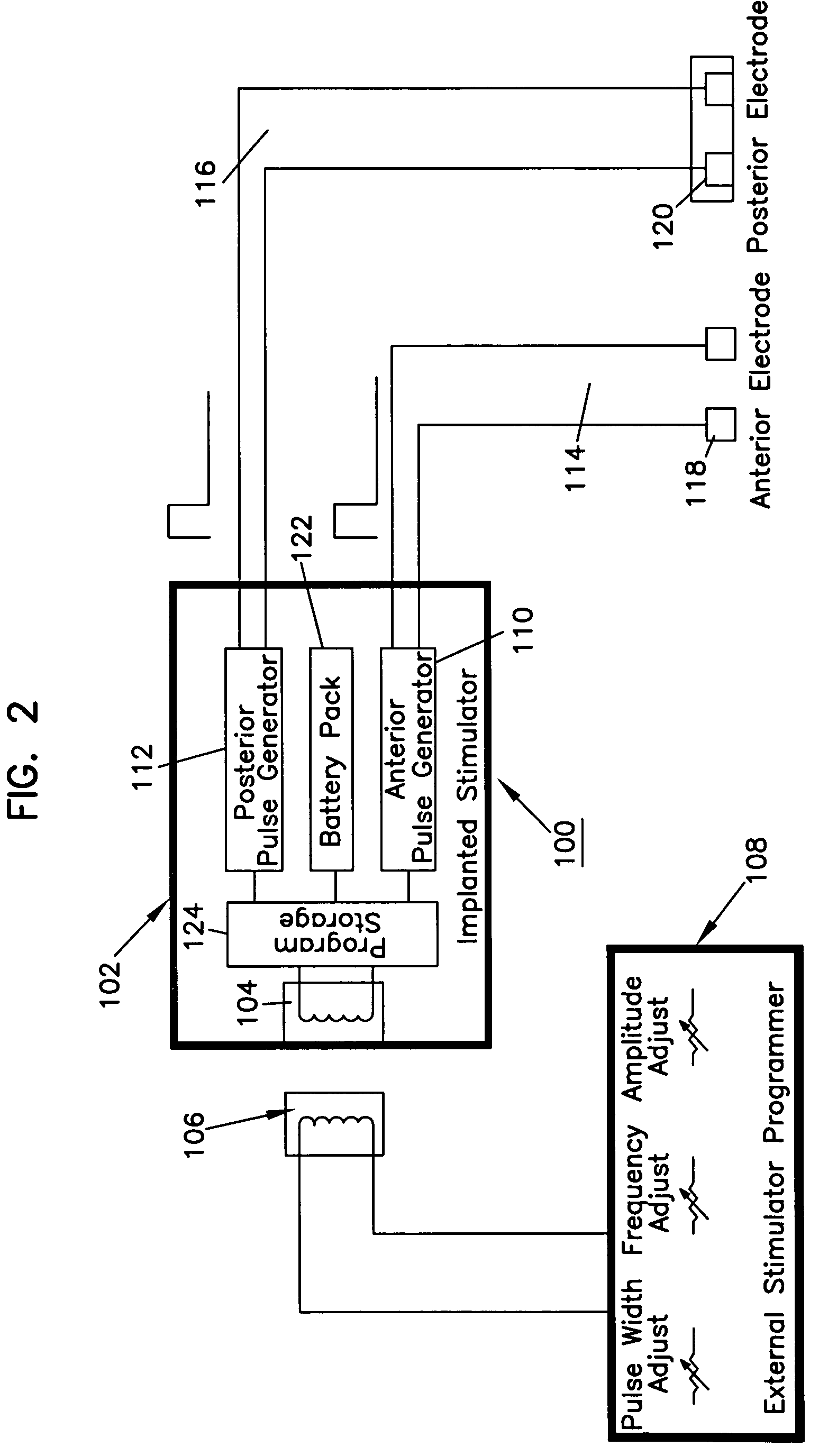High frequency obesity treatment
a high-frequency, obesity-related technology, applied in the field of disorders, can solve the problems of signal propagation, difficult subselection of fibers in practice, and both blocking techniques have significant drawbacks
- Summary
- Abstract
- Description
- Claims
- Application Information
AI Technical Summary
Benefits of technology
Problems solved by technology
Method used
Image
Examples
Embodiment Construction
[0025]With reference now to the various drawing figures in which identical elements are numbered identically throughout, a description of the preferred embodiment of the present invention will now be described.
Description of Prior Applications
[0026]The parent applications and the afore-mentioned related international applications (all incorporated herein by reference) teach various aspects of stimulating and blocking electrodes for either up-regulating or down-regulating the vagus nerve and combinations of these electrodes for a wide variety of therapies. To facilitate an understanding of the present invention, selected portions of those applications are described in this section.
[0027]1. Description of Vagal Innervation of the Alimentary Tract
[0028]FIG. 1 is a schematic illustration of an alimentary tract (GI tract plus non-GI organs such as the pancreas and ball bladder, collectively labeled PG) and its relation to vagal and enteric innervation. The lower esophageal sphincter (LES...
PUM
 Login to View More
Login to View More Abstract
Description
Claims
Application Information
 Login to View More
Login to View More - R&D
- Intellectual Property
- Life Sciences
- Materials
- Tech Scout
- Unparalleled Data Quality
- Higher Quality Content
- 60% Fewer Hallucinations
Browse by: Latest US Patents, China's latest patents, Technical Efficacy Thesaurus, Application Domain, Technology Topic, Popular Technical Reports.
© 2025 PatSnap. All rights reserved.Legal|Privacy policy|Modern Slavery Act Transparency Statement|Sitemap|About US| Contact US: help@patsnap.com



